American Guerrillas
American Guerrillas
From the French and Indian Wars to Iraq and AfghanistanHow Americans Fight Unconventional Wars
Thomas D. Mays
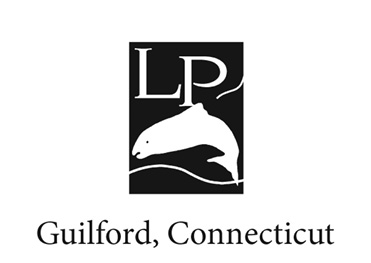

An imprint of Globe Pequot
Distributed by NATIONAL BOOK NETWORK
Copyright 2017 by Thomas D. Mays
Maps: Cristina Bauss, Humboldt State University
All rights reserved. No part of this book may be reproduced in any form or by any electronic or mechanical means, including information storage and retrieval systems, without written permission from the publisher, except by a reviewer who may quote passages in a review.
British Library Cataloguing in Publication Information available
Library of Congress Cataloging-in-Publication Data available
ISBN 978-1-4930-2229-8 (hardcover)
ISBN 978-1-4930-2230-4 (e-book)
 The paper used in this publication meets the minimum requirements of American National Standard for Information SciencesPermanence of Paper for Printed Library Materials, ANSI/NISO Z39.48-1992.
The paper used in this publication meets the minimum requirements of American National Standard for Information SciencesPermanence of Paper for Printed Library Materials, ANSI/NISO Z39.48-1992.
Printed in the United States of America
To my fellow Beirut Veterans of America
The First Duty is to Remember
Acknowledgments
This work would never have made it into print without the support of many people. First I need to thank literary agent Roger S. Williams at Roger Williams Agency, who brought the concept of this project to my attention. Thanks as well to Eugene Brissie of Lyons Press, who originated the idea, and to Lynn Zelem and Kim Giambattisto for their careful editorial suggestions. The historiography of military history has changed over the years from the traditional bugles and drums battle narratives to more nuanced studies of common soldiers and the effect of war on culture. This work owes much to historians who have laid the foundation for the study of unconventional warfare in American history, including Daniel E. Sutherland, Clay Mountcastle, Max Boot, John S. Pancake, Alfred H. Paddock Jr., and John Grenier. Special thanks as well to James Zobel of the MacArthur Memorial Library and Archives for his interest and contributions and to the faculty and staff of the Humboldt State University Department of Geographyespecially Amy E. Rock, Mary Beth Cunha, and Aaron Taverasfor their assistance with cartography. Most importantly, the greatest contributor to this work has been my primary editor, researcher, fact-checker, general critic, cartographer, and love of my life, my wife Cristina Bauss.
Prologue
At daybreak on May 28, 1754, a mixed force of Indians and Virginians approached a French military encampment on the Pennsylvania frontier. Situated near the junction of the Allegheny and Monongahela Rivers, the camp had been established under the protection of a rock cliff in a narrow ravine. Leading the Indians was Tanaghrisson, known to the English as the Half King. He was serving as guide to the Virginians and their commander, a twenty-two-year-old militia major by the name of George Washington. The force surrounded the camp, whisper-silent; the French had scarcely begun to stir. As Washington would later recall, an alert Frenchman spotted the attackers and cried out a warning. Taken by surprise, the French fired a few misguided shots, to which the Virginians responded with two well-aimed volleys. Now panicked, the French ran for the cover of the forest, where they were no match for the Half Kings warriors. They were driven out into the open. A French officer asked for quarter and Washington ordered an end to the firing.
Of Washingtons men, one was dead and three were wounded. Of the French, fourteen were dead or wounded and twenty-one had been taken prisoner. With the help of a translator, one of the wounded identified himself as the units commander. He was a peace emissary on a mission to deliver a letter to the English, demanding that they leave French territory. After the letter was translated and read, the Half King approached the officer and told him in French, Thou art not yet dead, my father. He then raised his tomahawk and gruesomely butchered the man. As if on cue, the other Indians killed all the wounded Frenchmen but one. Washington had granted quarter and had expected it to be given. He quickly placed the Virginians between the Indians and the remaining French prisoners, who were escorted to safety. On this blood-soaked spring morning, little did Washington know that the raid would spark what is known in Europe as the Seven Years War and in America as the French and Indian War.

American military historians have tended to focus almost exclusively on narratives placing the nations conventional forces against similarly organized enemies. From the American Revolution through the invasion of Iraq, military analyses have concentrated on individual commanders, their decisions, and the actions of opposing nation-states. While these are essential to military history, another element may be as vitally important to the study of warfare, and in turn the study of American history: unconventional guerrilla warfare. From the founding of the colonies through the current wars of the twenty-first century, Americans have always been involved in non-state-supported conflicts. Long before the word guerrilla was coined, Native Americans were engaging in classic guerrilla campaigns against Europeans encroaching on their lands. Left to their own devices against the Natives, settlers at first responded by adapting to Native warfare, then escalated their counterattacks and began targeting crops, villages, and non-combatants. This brutal form of warfare would last for nearly three centuries, until the end of the Indian Wars in 1890.
Having learned the Native forms of raids and ambushes, Americans began forming ranger companies. They actively attempted to prevent raids, penetrating as far as Canada to bring the war home to their enemies. During the Revolution riflemen continued waging this form of unconventional war, often confounding and defeating British regulars. Meanwhile, Patriots who found themselves under British occupation took up arms as well. Following the Revolution, guerrilla fighting did not dissipate on the American frontier. When a band of former soldiers rose up in rebellion in western Massachusetts, the Founders took the threat of guerrilla war so seriously that they met in Philadelphia in 1787 to establish a central government with the power to counter it. In fact, the first serious test the new nation and President George Washington faced came in the form of a guerrilla force in western Pennsylvania, threatening the nascent government over its whiskey tax.
The American Civil War was primarily fought with conventional forces, and its outcome was clearly determined by the successes (and failures) of those forces. But far from the battlefields of Gettysburg, Antietam, and Shilohnames known to virtually every Americana concurrent guerrilla war was waged, a war in which quarter was rarely given and a personal vendetta could follow a man from his homestead to his bed in an army hospital. However, until recently historians have paid scant attention to this war, despite the fact that guerrilla fighting in Kansas pre-dated the Civil War by several yearsand the spark that lit the conflict, John Browns 1859 raid on Harpers Ferry, was a large-scale act of domestic terrorism. Throughout the war countless bands of pro-Union and pro-Southern guerrillas battled each other for control of their communities. In Union-occupied areas of the South, the U.S. Army adopted tactics learned from breaking Indian resistance movements against the Rebels, destroying communities, farms, and crops. As the leaders of conventional forces found themselves continually challenged by guerrillas, the United States began establishing the worlds first military code specifically addressing guerrilla warfare.
Next page
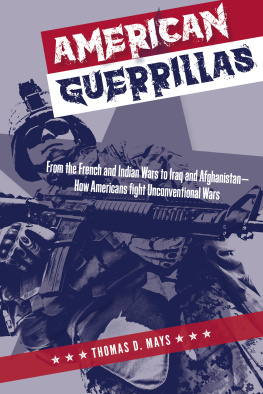

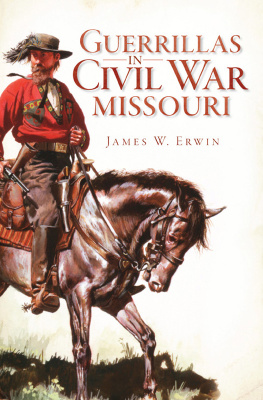

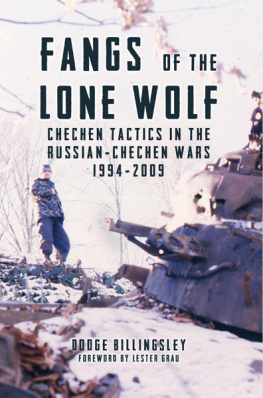
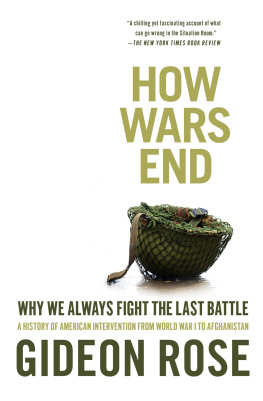
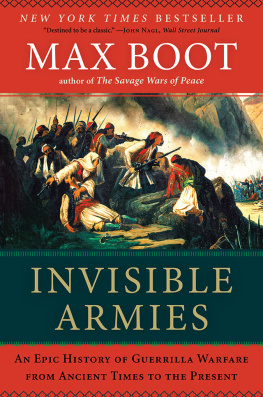
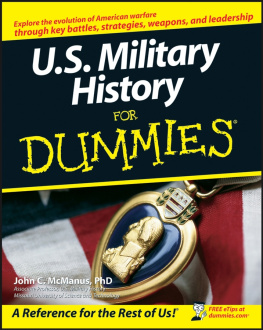
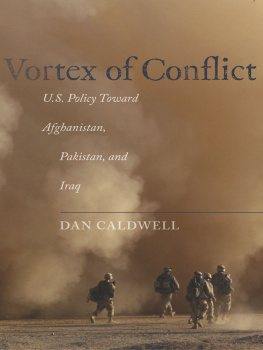
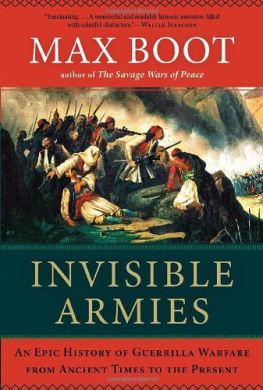



 The paper used in this publication meets the minimum requirements of American National Standard for Information SciencesPermanence of Paper for Printed Library Materials, ANSI/NISO Z39.48-1992.
The paper used in this publication meets the minimum requirements of American National Standard for Information SciencesPermanence of Paper for Printed Library Materials, ANSI/NISO Z39.48-1992.